The Bank of Italy’s art collections contain an interesting group of ancient sculptures, dated for the most part between the 2nd and 4th centuries AD. Some of these were discovered at the end of the 19th century during the construction of Palazzo Koch, the most important being the statue of Antinous, an example of the balanced forms of Hellenic art revived by the emperor Hadrian. Other sculptures of various origin and size exemplify aspects of 2nd-century portraiture. The Head of Trajan, for instance, a slightly stylized but nonetheless incisive rendering, is the product of a fairly realistic conception of the emperor’s likeness, while the Bust of Commodus, with its heightened chiaroscuro, conveys the harsh and gloomy expression typical of the Antonine age.
The bloody end of Commodus’s reign and long period of political and military anarchy that followed drove the Empire into a slow decline. In the 3rd century, signs of the restlessness that was pervading society became reflected in the figurative arts. The crude depiction of lions and boars on the large lenos sarcophagus, as well as the very different stylized evangelic images on the Paleo-Christian sarcophagus illustrate the complex moment of passage as Western art evolved from Mediterranean to “European”.
Unlike the long centuries of the Middles Ages, which are not well-represented in the Bank of Italy’s collections, European Renaissance and Mannerist art is exemplified by works of considerable merit. A number of the paintings are landscapes, a dominant theme of Flemish art of the early 16th century. Indeed, the fame of the Nordic painters, many of whom were inspired by the founder of the style, Joachim Patinir, rested on just such wide panoramas of nature. Patinir’s influence is evident in the Baptism of Christ by the enigmatic Master of the von Groote Adoration and in Jan Mostaert’s Saint Christopher, with its attention to the realism of every detail. The late 16th-century Madonna with Child and Saint Jerome by an anonymous Spanish painter is in the Italianate style of Louis de Morales and belongs to the subsequent Mannerist phase.
In sculpture, the 16th century is represented by three magnificent works. The influence of Michelangelo on art in central Italy in the second half of the 16th century can be admired in the marble statue of the Holy Trinity, similar in style and technique to the work of the school of the Florentine sculptor Baccio Bandinelli. The pair of bronze statuettes depicting two of the twelve labours of Hercules are instead modelled on pieces by the Dutch sculptor Giambologna, who executed most of his work for the Medicis. His sculptures, inspired by the ideals of Antiquity, mark the end of the Renaissance period.
L’Antico e il Rinascimento
Antiquity and the Renaissance

Works of art
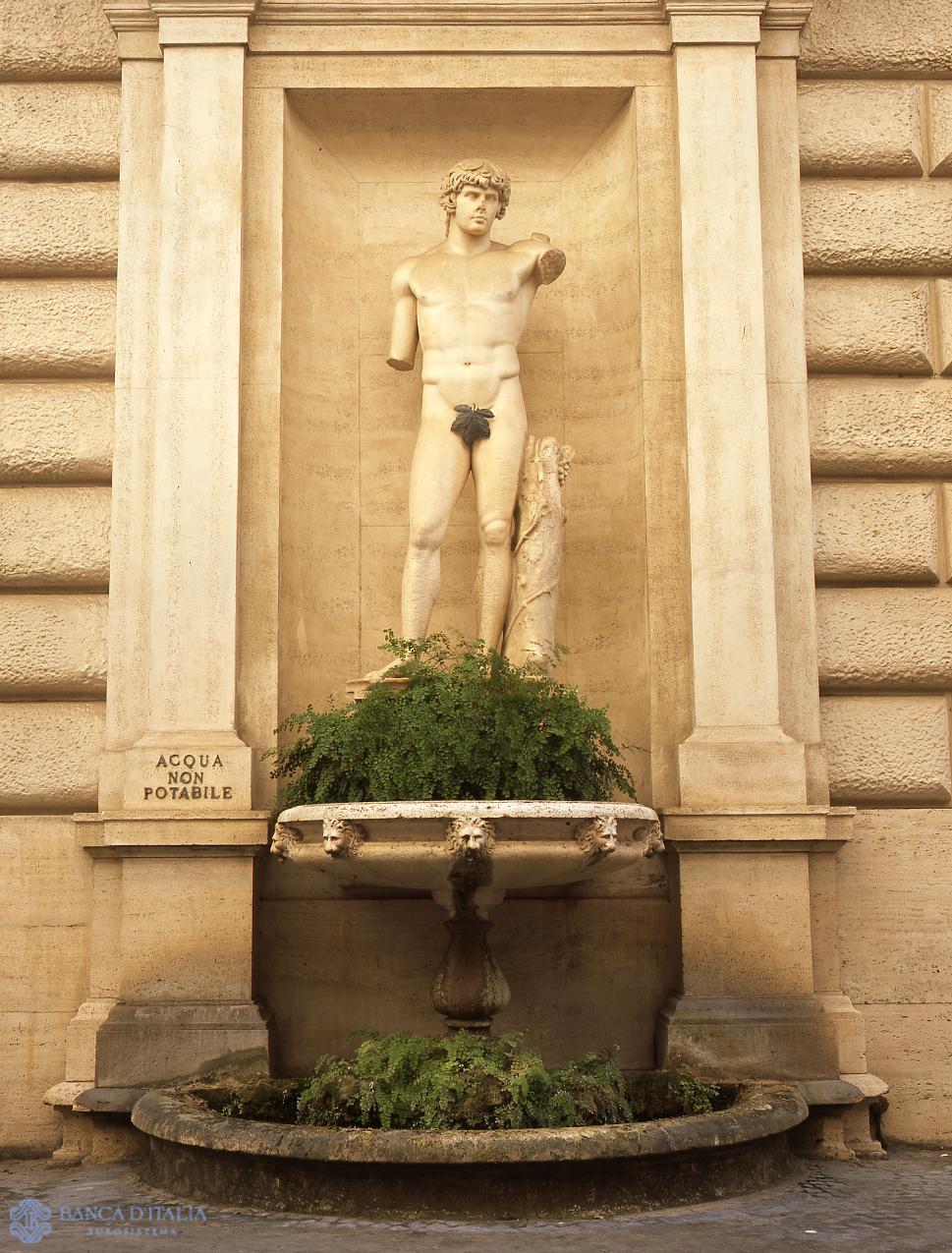
Statue of Antinous
In the inner courtyard of Palazzo Koch stands the large statue of Antinous, discovered in 1886 during the construction of the Bank of Italy’s head office. It was sculpted in lunense marble in the second century AD to replicate a portrait of the Emperor Hadrian’s favourite, who drowned in the Nile in October of the year AD 130.
2th century AD
Sculpture
Portrait
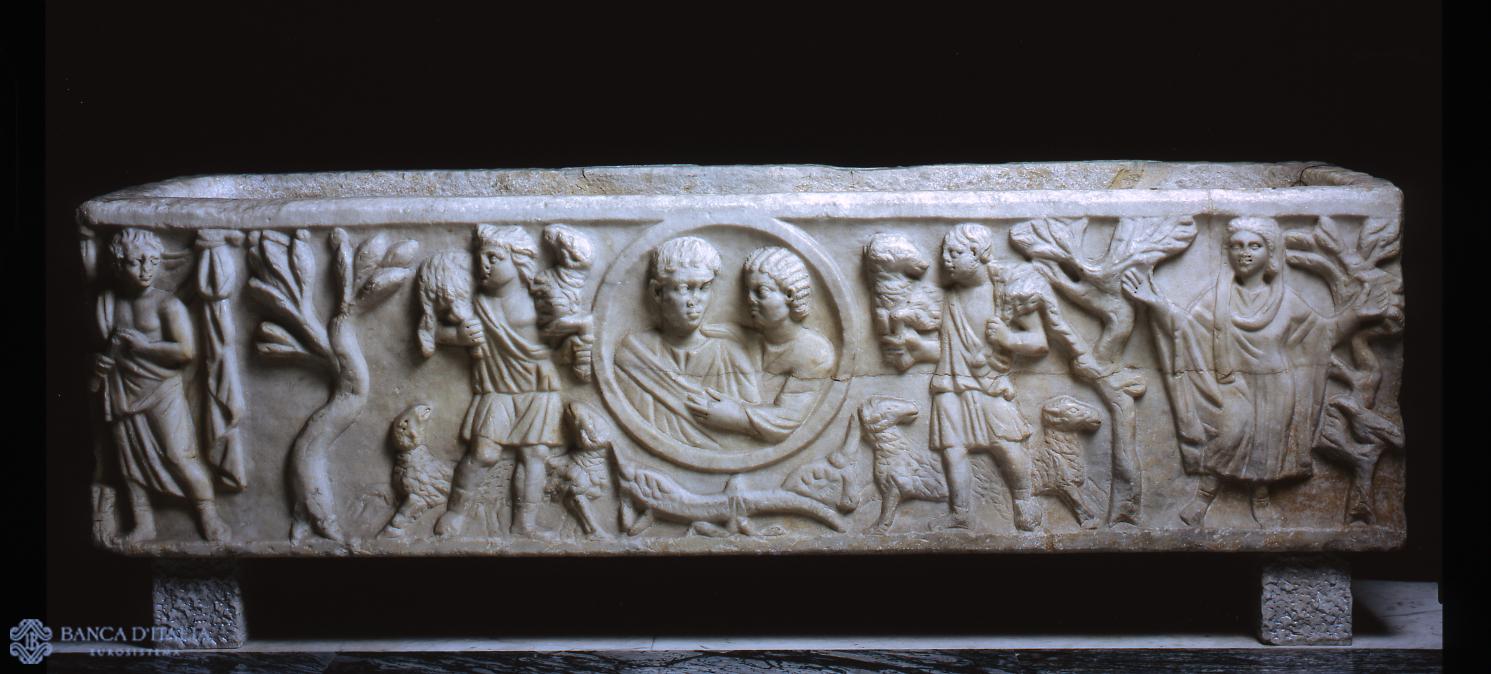
Paleochristian sarcophagus
The sarcophagus in grey-veined white marble can be dated between the end of the third and beginning of the fourth century AD. On the front are two images of the Good Shepherd placed symmetrically at the sides of a clypeus bearing the effigies of the deceased couple.
3th century AD
Sculpture
Religious

Saint Christopher
In the middle of a broad landscape and occupying most of the painting strides the large figure of St. Christopher, dressed as a pilgrim, crossing the river with the baby Jesus on his shoulder. Although the artist draws on popular iconography, he also emphasizes an often neglected element, the saint’s hut, which is depicted in detail on the left.
16th century AD
Painting
Religious

Portrait of Commodus
The bust in lunense marble is of the emperor Commodus, son of Marcus Aurelius and member of the Antonine dynasty, who came to power in AD 180 and was killed in AD 192. The emperor had himself portrayed with curly hair and thick beard ‘in the Greek fashion’, like his father; his features are extremely true-to-life and resemble those depicted on coins minted in AD 185.
2th century AD
Sculpture
Portrait
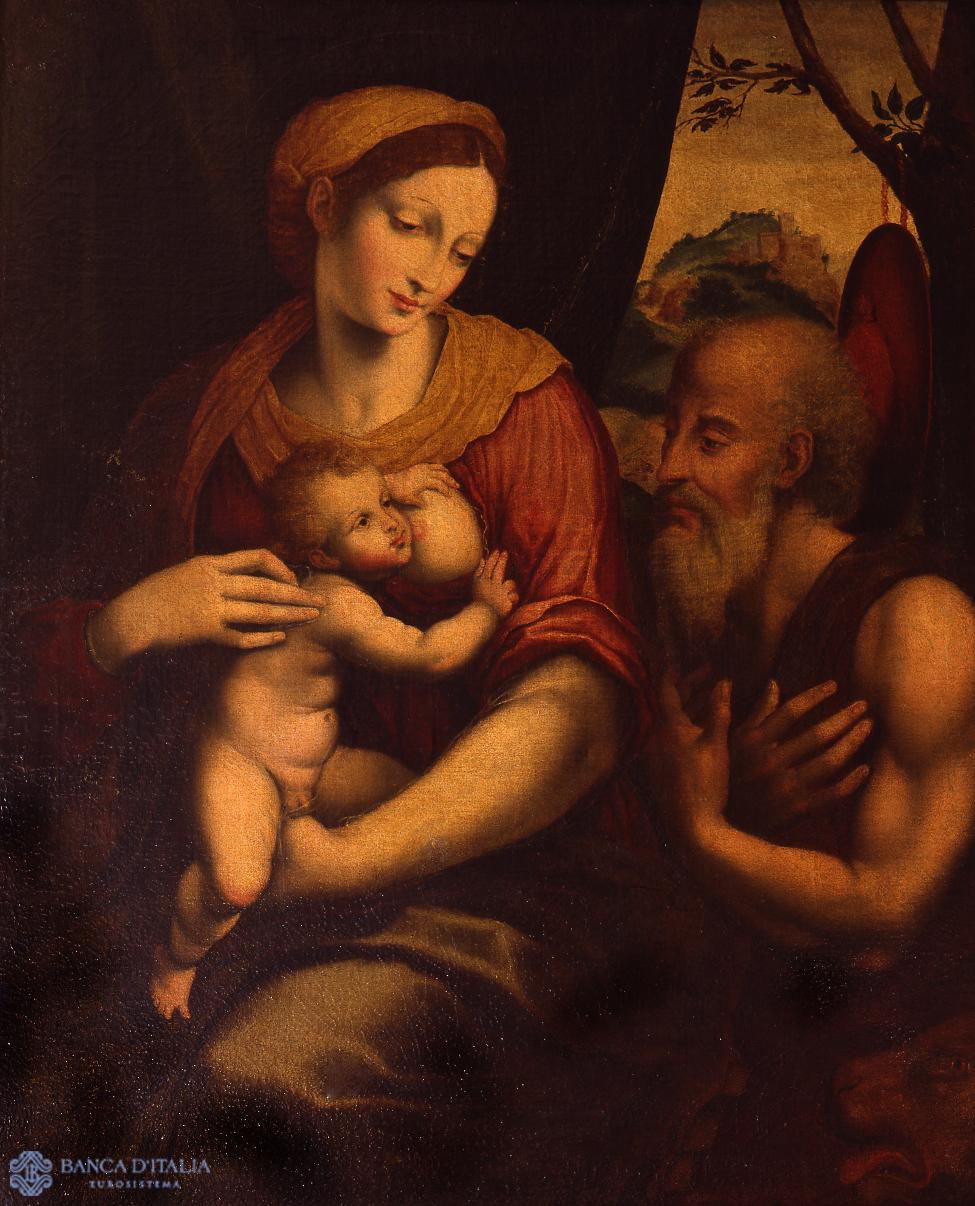
Madonna with Child and Saint Jerome
In this delicate painting the Virgin Mary turns towards St. Jerome while Baby Jesus briefly abandons the breast to bless the saint. The elderly Doctor of the Church, his arms crossed on his chest in sign of worship, is recognizable from the red Cardinal’s hat hanging from the branch of a tree.
16th century AD
Painting
Religious
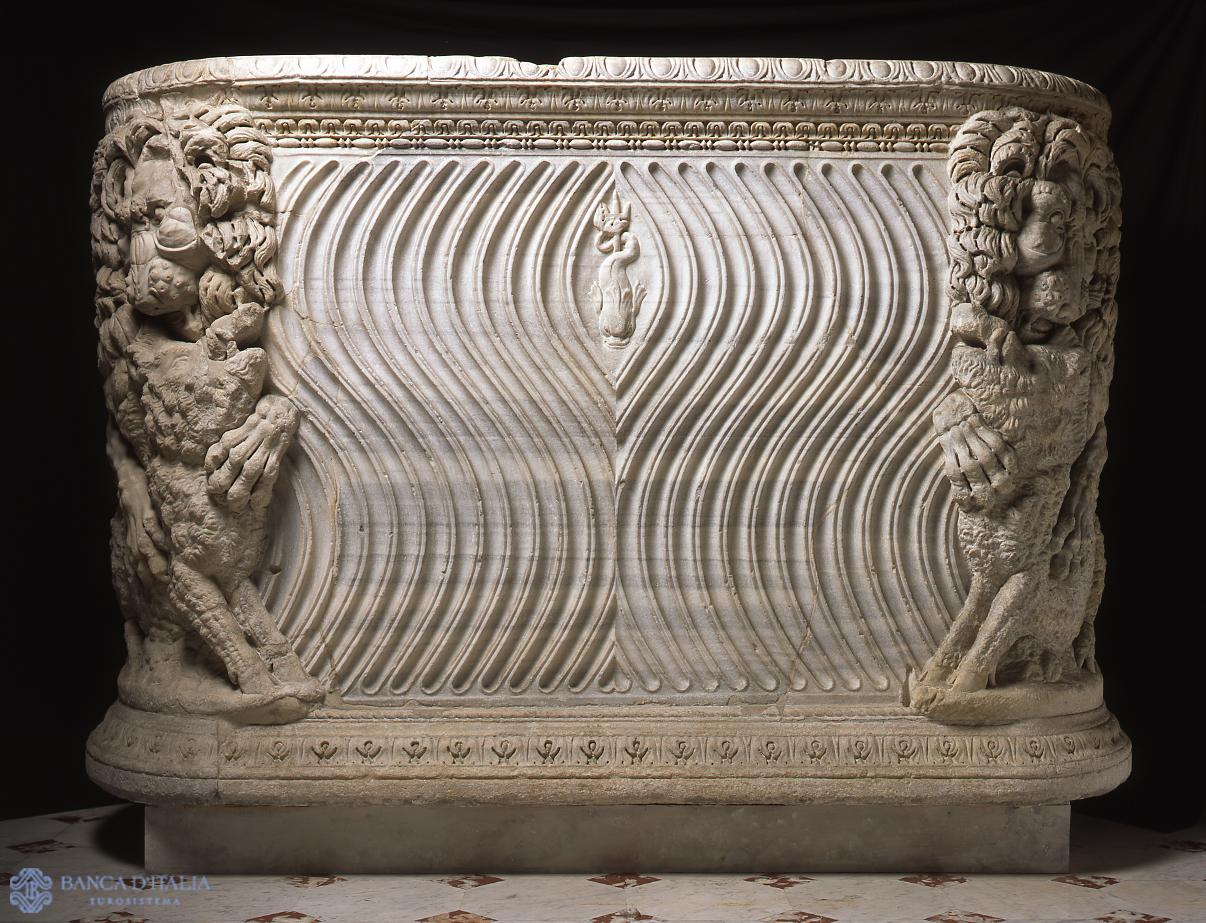
Lenos sarcophagus
This magnificent marble lenos sarcophagus dating from the third century AD is one of the most important antiquities in the possession of the Bank of Italy. At each of the rounded ends a lion seems about to devour a boar, a subject that enjoyed great popularity in urban sarcophagus workshops from AD 230 to AD 280.
3th century AD
Sculpture
Religious
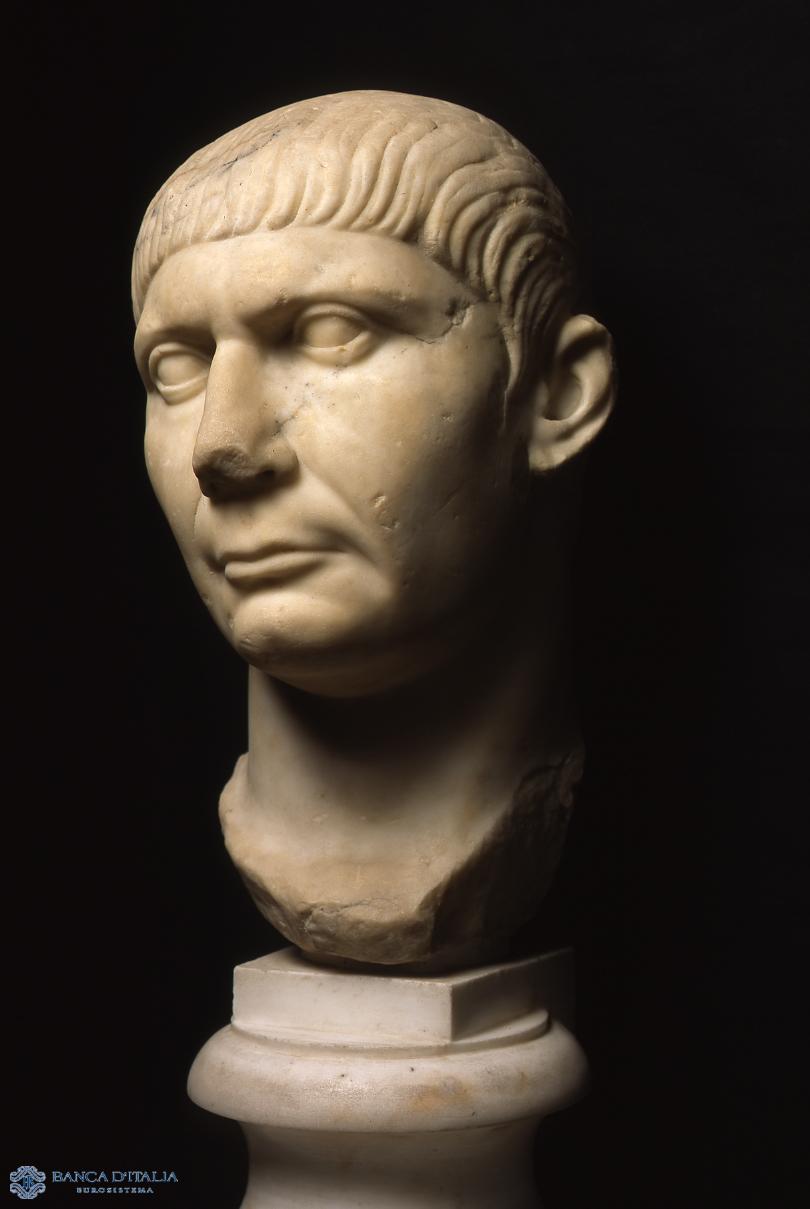
Head of Trajan
The sculpture is a true-to-life portrait of Trajan, as is clear from a comparison with coins minted between AD 108 and AD 111 when the Roman Empire expanded to its greatest extent under the command of this emperor of Spanish origin.
2th century BC
Sculpture
Portrait

Hercules Slaying the Nemean Lion
The small bronze statue captures Hercules at the moment of greatest physical exertion, his muscles tensed, his left leg bent on the back of the lion and his hands griping its jaws. The beast, overwhelmed by the superhuman strength of the mythical hero, arches its body and raises its front paws.
17th century AD
16th century AD
Sculpture
Biblical - Historical - Mythologic
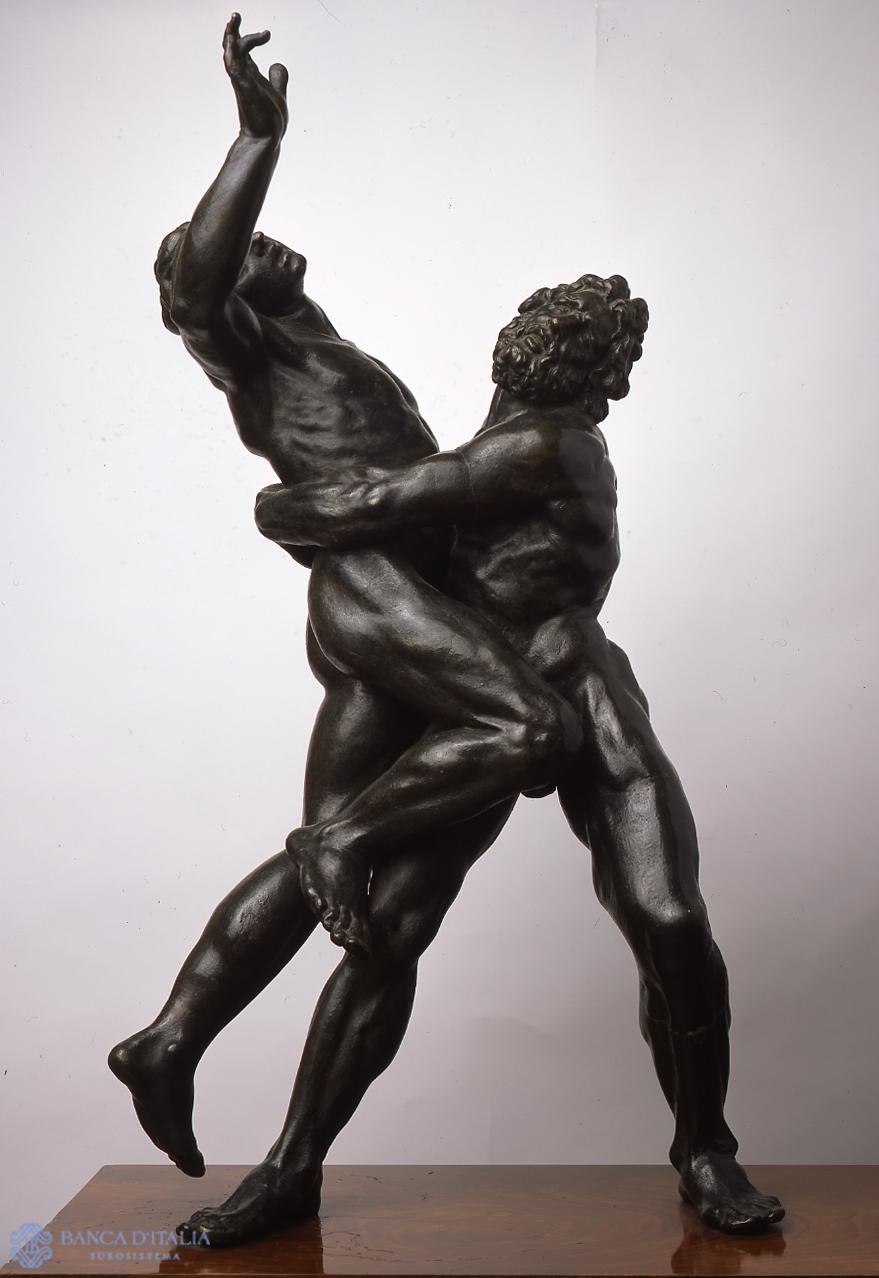
Hercules and Antaeus
His feet planted firmly on the ground, Hercules grasps Antaeus and lifts him into the air as the giant flails his arms and opens his mouth to cry out. According to myth, Antaeus, son of Poseidon and Gaia and King of Libya, was a giant who challenged all passers-by.
16th century AD
Sculpture
Biblical - Historical - Mythologic
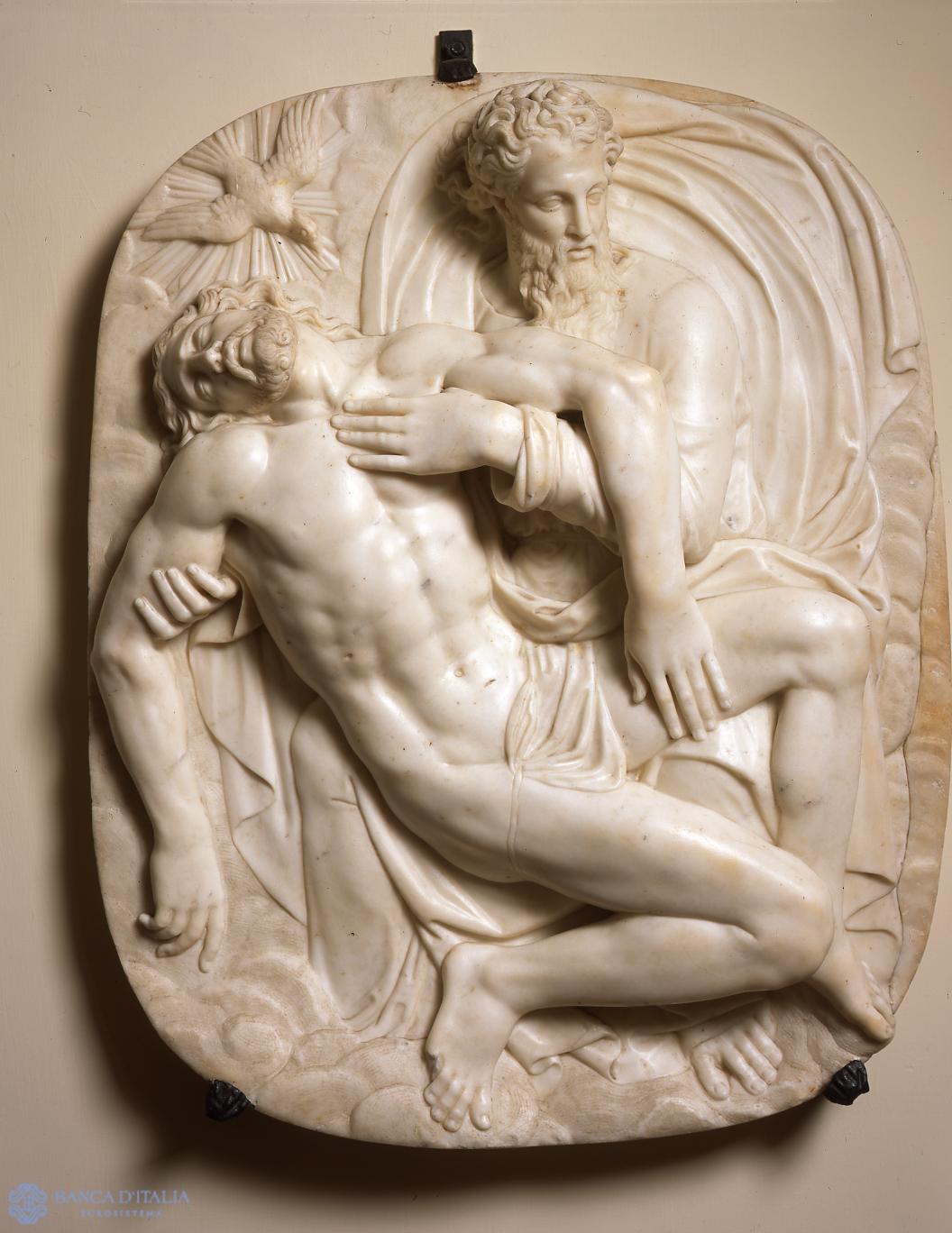
Bas-Relief Depicting the Holy Trinity
This fine marble bas-relief, on a vaguely oval-shaped panel, contains an interesting representation of the Trinity. The foreground is occupied entirely by the body of the lifeless Christ, held gently in the arms of the Father.
16th century AD
Sculpture
Religious
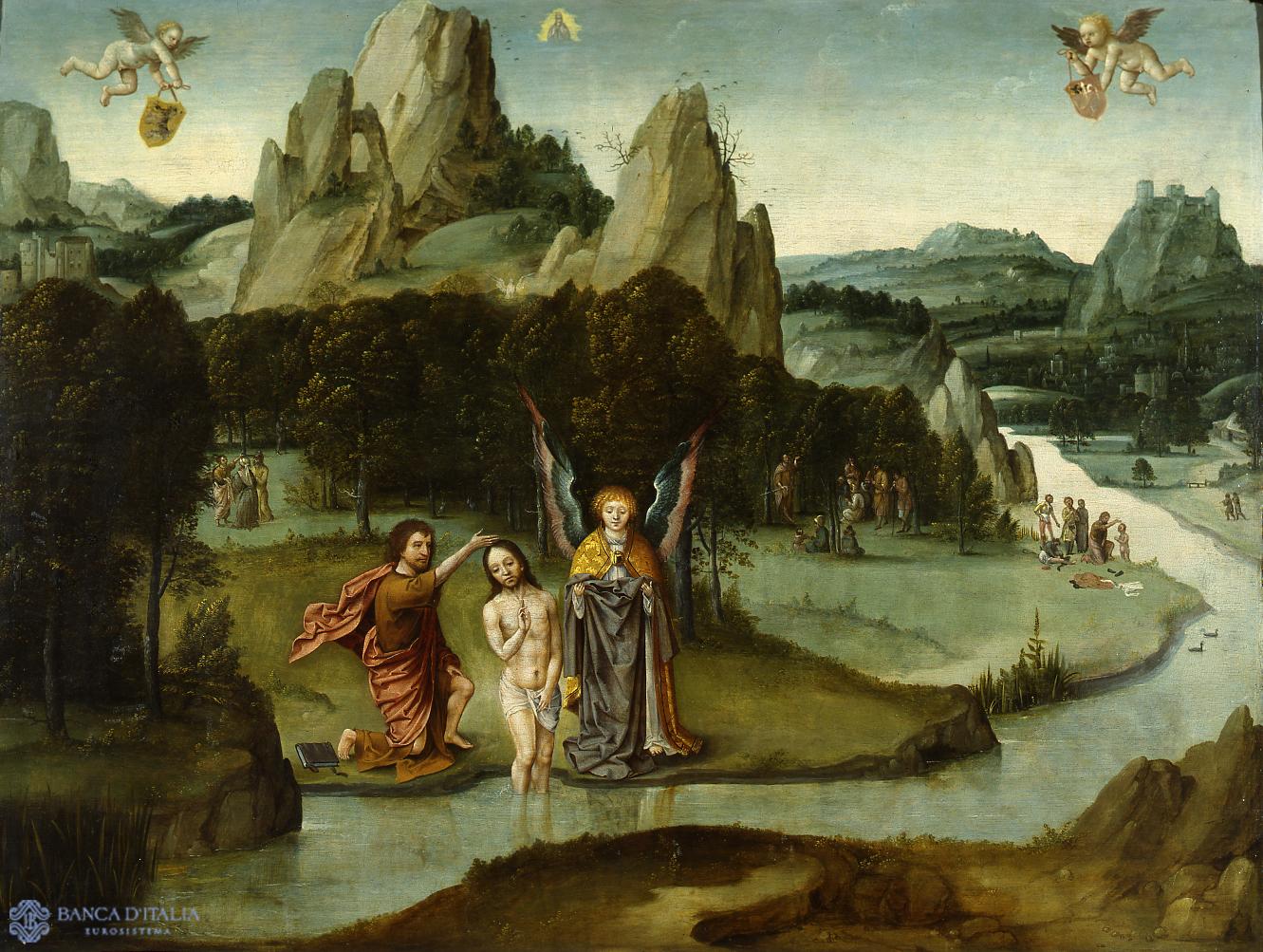
Baptism of Christ
The Gospel episode of the baptism of Christ is depicted in a typical Northern landscape of wooded hills, rocky outcrops, turreted castles and shepherds’ dwellings. The Saviour stands in the river Jordan, which flows through the scene, while John the Baptist, kneeling, pours water over his head.
16th century AD
Painting
Religious
